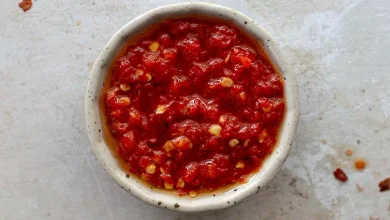Antioqueño 🇨🇴, also known as Antioqueñan cuisine, is a rich and diverse culinary tradition hailing from the Antioquia region of Colombia. 🍽️ This cuisine is deeply rooted in the culture and history of the region and features a variety of ingredients and dishes that reflect the vibrant and diverse landscape of Antioquia.
History: Antioqueño cuisine has its origins in the traditions of the indigenous people who inhabited the region before the Spanish colonization. Over time, it has been influenced by Spanish, African, and other Latin American cuisines. The history of Antioqueño cuisine is intertwined with the region’s agricultural heritage, mining history, and the fusion of various cultural elements.
Components: Antioqueño cuisine boasts a wide range of components and ingredients. Some of the key elements include:
-
Beans: A staple in many Antioqueño dishes, particularly the famous “Bandeja Paisa,” which features red beans.
-
Maize: Corn is used to make arepas (corn cakes) and tamales, both of which are popular in Antioqueño cuisine.
-
Meat: Beef and pork are commonly used in dishes like the aforementioned Bandeja Paisa, which includes items such as chorizo, morcilla (blood sausage), chicharrón (crispy pork belly), and ground beef.
-
Plantains: Often served fried or mashed, plantains are a beloved side dish in Antioqueño cuisine.
-
Rice: Rice is a common accompaniment to many dishes, and it’s often served with beans and meat.
-
Arepa: These thick, round corn cakes are a staple in Antioqueño cuisine and are served with various toppings or as an accompaniment to many dishes.
Steps to Prepare a Typical Antioqueño Dish – Bandeja Paisa: 🍛
-
Cook the Beans: Start by cooking the red beans until they are tender. You can season them with onions, garlic, and cumin for added flavor.
-
Prepare the Meat: Cook the meats, including chorizo, morcilla, chicharrón, and ground beef. Season them with traditional Colombian spices like achiote and cumin.
-
Cook the Rice: Prepare white rice to serve as a side dish.
-
Fry the Plantains: Slice the plantains and fry them until they are golden and crispy.
-
Make Arepas: Prepare the cornmeal dough and shape it into thick, round arepas. Cook them on a griddle until they are browned and slightly crispy on the outside.
-
Assemble the Plate: Arrange all the prepared components on a large platter. Traditionally, it includes a mound of rice, a pile of beans, the various meats, fried plantains, and arepas. You can also add avocado, a fried egg, and a slice of tomato.
-
Serve: Bandeja Paisa is a hearty meal meant to be shared with family and friends. It’s typically served with aji sauce or hogao (a Colombian tomato and onion sauce) for added flavor.
Time Needed to Prepare: The time needed to prepare Bandeja Paisa can vary, but it typically takes around 2 to 3 hours, depending on your cooking skills and the number of components you’re making from scratch.
Enjoy your journey into the delicious world of Antioqueño cuisine! 🇨🇴🍽️👨🍳
Certainly! Here are the nutrition facts and some health information for a typical serving of Bandeja Paisa, a traditional Antioqueño dish:
Nutrition Facts for a Typical Serving of Bandeja Paisa:
-
Calories: A typical serving of Bandeja Paisa can contain anywhere from 1,000 to 1,800 calories or more, depending on portion size and ingredients used. It’s a calorie-dense meal due to the various components.
-
Protein: Bandeja Paisa is protein-rich, with significant amounts of protein coming from the various meats, such as chorizo, morcilla, and beef.
-
Carbohydrates: It contains a substantial amount of carbohydrates from rice, beans, arepas, and plantains. These provide energy but can also contribute to the calorie count.
-
Fiber: Beans are a good source of dietary fiber, which can aid in digestion and promote a feeling of fullness.
-
Fats: The dish can be high in saturated fats, particularly from fried items like chicharrón and plantains. Moderation is key, as excessive saturated fat intake can have health implications.
-
Vitamins and Minerals: Bandeja Paisa provides various vitamins and minerals, including B vitamins, iron, and potassium, mainly from the beans and meats.
Health Information:
-
Caloric Density: Bandeja Paisa is a calorically dense meal, which means it provides a significant number of calories relative to its portion size. If you’re watching your calorie intake, it’s essential to enjoy this dish in moderation.
-
Protein: The protein content in Bandeja Paisa can be beneficial for muscle maintenance and repair. However, be mindful of the high saturated fat content in some of the meats.
-
Carbohydrates: The carbohydrates in this dish provide energy, but they are mainly simple carbohydrates from items like rice and plantains. Complex carbohydrates, like those from whole grains, offer more sustained energy.
-
Fiber: The fiber in beans can aid in digestion and help you feel full. Including more fiber-rich foods in your diet is generally a good choice for digestive health.
-
Saturated Fats: Some components of Bandeja Paisa, such as chicharrón and fried plantains, are high in saturated fats. Excessive consumption of saturated fats can contribute to heart health issues. Consider enjoying this dish as an occasional treat rather than a regular meal.
-
Balanced Eating: While Bandeja Paisa is a delicious and culturally significant dish, it’s essential to balance it with other meals that include a variety of fruits, vegetables, and lean proteins to meet your nutritional needs.
As with any dish, moderation is key, and it’s essential to consider your individual dietary preferences and health goals when enjoying traditional meals like Bandeja Paisa.



